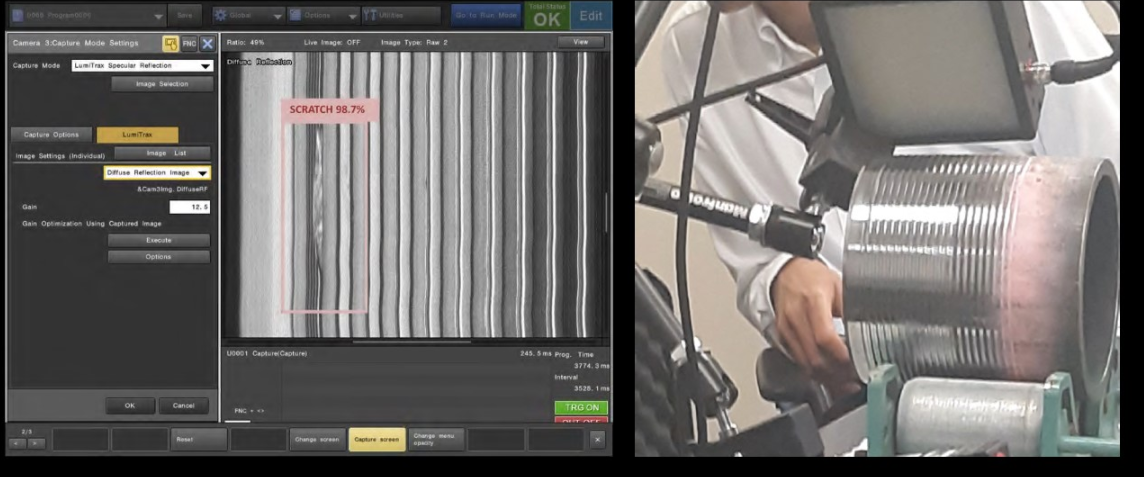Despite potential complications, consumers rarely see the manufacturing process of the products they consume, but they're always able to spot when there is a defect in those products. These defects range from cosmetic damage to a product to disastrous malfunctions – both of which cost a manufacturer big time. The reality of modern manufacturing is unexpected errors are repeated more than most recognize, and often, companies are not aware of critical defects in products until its too late. Manufacturers can eliminate these errors with proper development of real-time defect detection of both known and unanticipated issues on manufacturing lines. Here we discuss how artificial intelligence solutions can be used for manufacturing defect detection.
How AI used in Defect Detection
There are tons of solutions for defect detection in manufacturing using cameras for numerous applications, but AI and image processing goes beyond the camera. Image processing assembles all image data into a cloud database where it can be evaluated by tens to hundreds of machine learning algorithms to pinpoint defects or fluctuations and provide course correcting measures. Results are analyzed to provide risk assessments of the line’s process and the overall program. By the time a product is ready for production, all potential kinks are worked out. Once the product is in production, the AI-powered defect detection process continuously monitors the production line to divert any addition defected products to the correct location to be fixed.
The Role of Machine Learning
Machine learning algorithms are given a baseline of what a normal unit looks like. The project engineer creates the image processing framework to spot the key areas to examine. These algorithms focus on each point of interest and identifies anything that looks different than the baseline example. Just like any learned skill, they get more advanced over time, but the most beneficial feature is that the same algorithm can find multiple defects.
In typical vision systems, each defect would have had to be inspected and pre-programmed before it could be detected. This can be a costly process. One algorithm has the power to do the job of many. It quickly learns how products should look and operate and independently catches issues in real-time, saving money, rework and preventing defected products from getting to consumers.
The Manufacturing Process

Instead of the typical human inspector checklist, machine learning algorithms can check 25 or more items at once. To understand the real value of this process, we first need a deeper understanding of classic manufacturing processes. What most don’t know is that 98% of electronic assembly lines are manual assembly lines.
The Stages of Prototype to Mass Production:
Engineering prototype -> Engineering Validation (EVT) -> Design Validation (DV) -> Production Validation (PV) -> Mass Production
Engineering Validation
The common stages that a manufacturing firm moves through is the process of designing and testing the actual production process itself. Once you have an engineered prototype, you move to the first step known as an Engineering Validation Test (EVT). The EVT build is the trail of integrating what looks-like and what works-like into a single composition, within the production manufacturing process.
Design Validation
The purpose of Design Validation is to validate that product designs meet established requirements. Design Validation testing is the physical testing of pre-production and/or production parts. This includes analytical and physical testing with to prove that products will satisfy user needs. Validation is displayed as an image, text or audio file that proves proper manufacturing is completed.
Process Validation
Process Validation analyzes data throughout the design and manufacturing process. The purpose is to ensure various inputs lead to high quality and consistent outputs. This is a continued process that needs to be frequently adjusted as manufacturing evaluations are gathered.
Process Validation is typically broken down into 3 steps: process design, process qualification, and continued process verification. This component is vital to defect detection in manufacturing because quality can't always be determined by the finished product inspection.
Konrad Konarski, V-Soft's Practice Head for AI and IOT explains the purpose of artificial intelligence in image processing to automatically detect and categorize defects.
Real-time defect detection, using image processing, has been extensively studied and deep learning techniques are capable of automatically detecting manufacturing defects to enhance the production process. This leaves less room for error.
Want more information on how AI can solve defect detection in your manufacturing operation? Connect with our Artificial Intelligence expert, Konrad Konarski today!
















